

For our series Iconic Buildings, we speak to people who live or work in buildings of architectural significance. Is the exposure to an architectural wonder on a daily basis a source of inspiration or simply part of the backdrop?
This time we were lucky enough to speak to Marc Quintana Carreras Head of Maintenance at the Barcelona Pavilion, a symbol of modernist architecture, most likely studied by every architecture student in the world. The geometric masterpiece arranged out of glass, steel and varying types of marble was originally designed as the German National Pavilion in 1929, part of the Barcelona International Exhibition. After the exhibition the Pavilion was disassembled but its presence and reputation lingered and finally in 1980 Barcelona City Council reconstructed the Pavilion in its original site, where it has remained every since, an icon of the city.
For eleven days last autumn the Pavilion was transformed as part of an artistic intervention 'mies missing materiality' by architects Anna & Eugeni Bach.
What is your role at the Barcelona Pavilion?
I play several roles at the Pavilion but my title is Head of Maintenance, so during my shift I look after the building and manage any damage or incidents. I also supervise the cleaning and up-keep of the building. Some days I also welcome and sell tickets to the visitors when they arrive.
Additionally I designed and manage the Educational Programme which we offer to schools. This is my favourite part of the role.
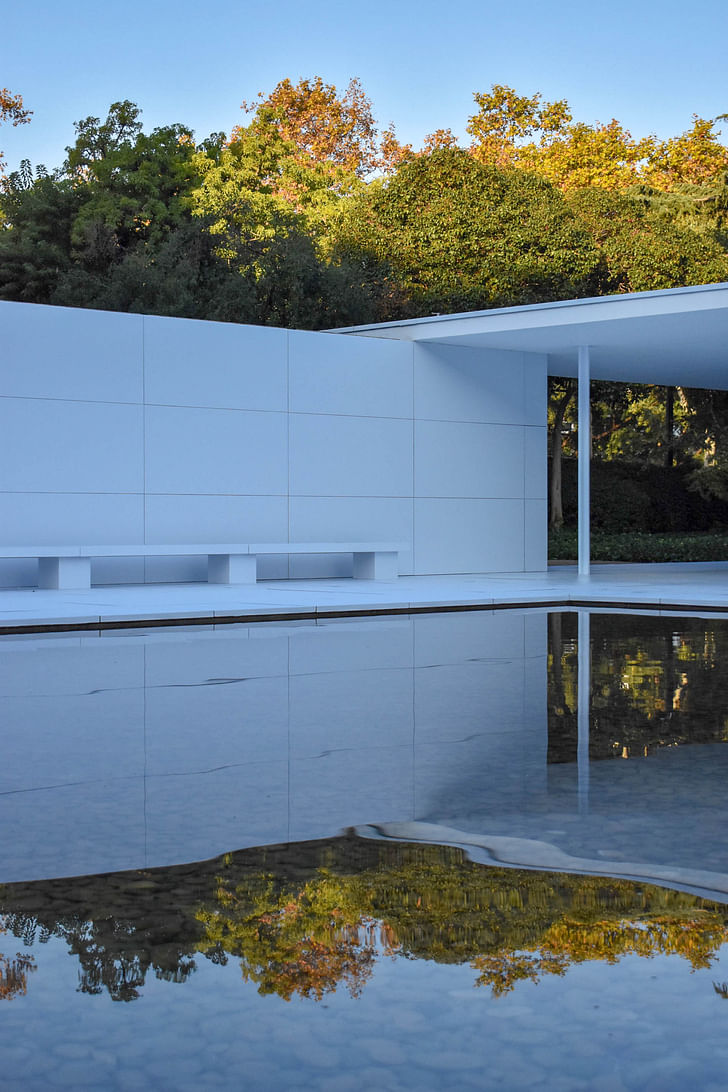
How long have you worked at the Pavilion?
I have worked at the Pavilion since July 2001.
Did the building influence your decision when accepting the job?
Yes, I was studying History of Art and started as an exhibition’s watchman at the Pavilion. It was about the Scottish Parliament by Enric Miralles and Benedetta Tagliabue. It was opened the whole summer.
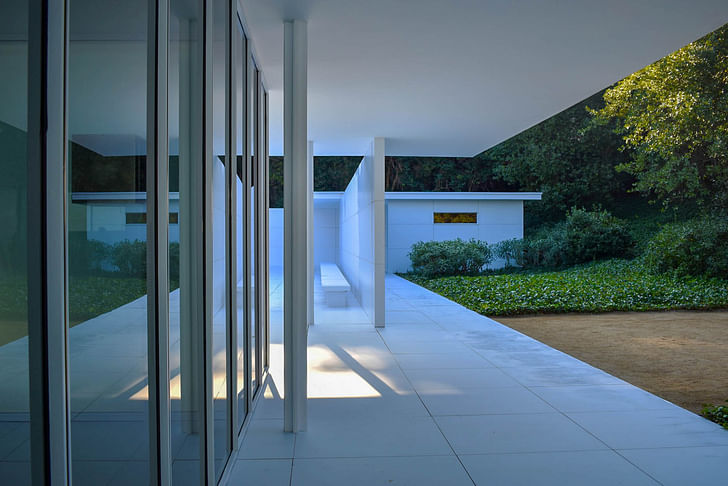
Do you enjoy working in an iconic Building?
Yes I do.I love how people move in the space. How they arrive at the pavilion as a tourist with a long list of places to visit in Barcelona and when they arrive at the Pavilion, they start walking in “slow motion”.
What do you like most about the Pavilion?
How I feel in it. The quietness you breathe in the space, its balance. There are lots of details: how the light effects the building, how it changes during the day and during the different seasons. When it rains or it’s sunny. I love the reflections on the marbles, on the glass. the shades on the walls.

What do you like about the architectural design of the building?
I particularly enjoy how the building affects visitors. How the composition of the space, its walls, conditions the visit . How most people walk around the space the same way, following the same path, without even knowing it.
Do you have a favourite lunch spot?
There are some benches, right in front of the Pavilion, about 50 meters away, I love this spot because you have a nice perspective.
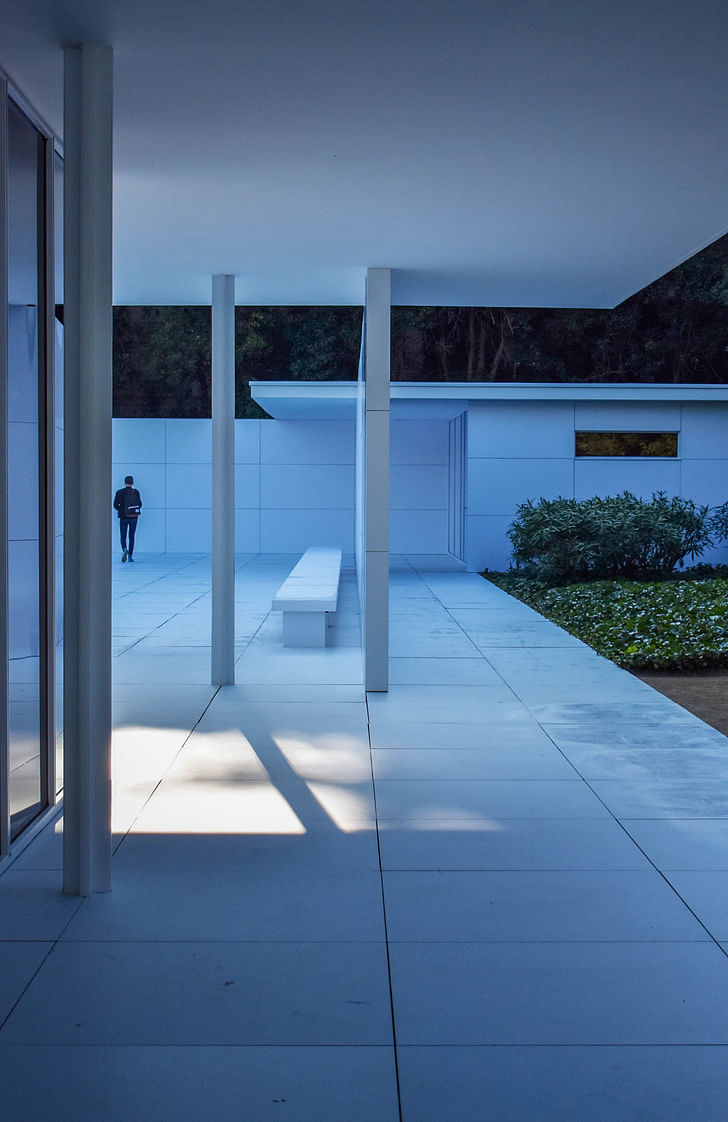
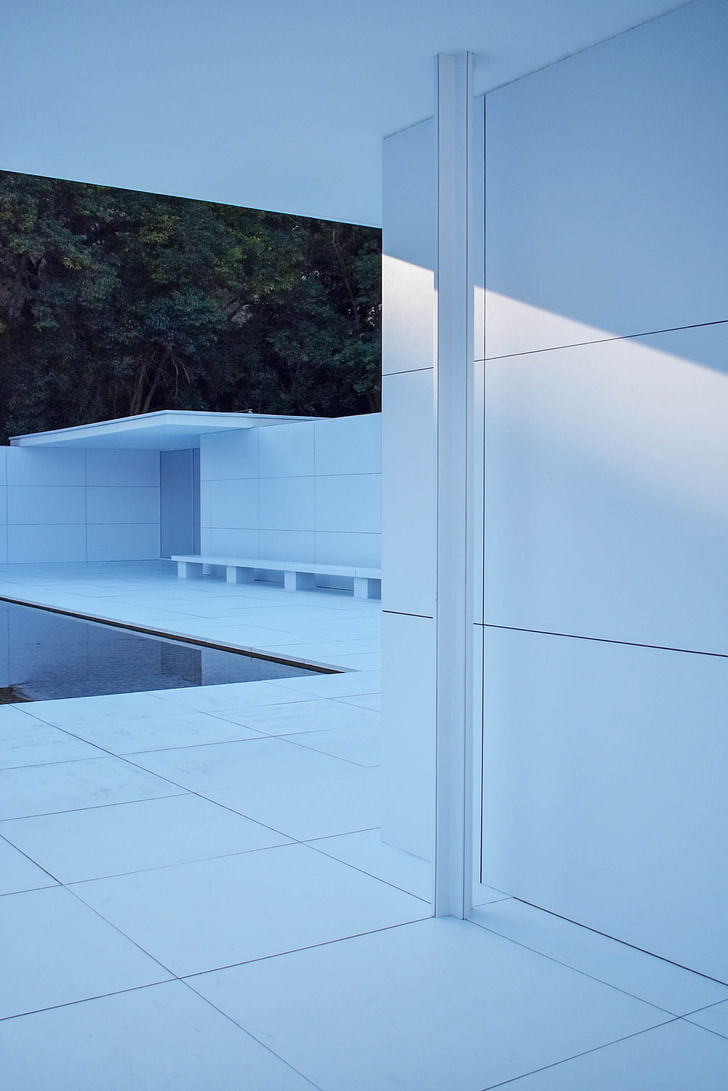
What time of year do you most enjoy the Barcelona Pavilion?
All year round. Some light effects only happen at certain moments of the year. In winter, because of the sun moving so low, the water flashes on the roofs. In summer, water flashes on the travertine walls late in the afternoon. I love the sunsets in autumn. In spring, the roof shades on the walls. Early in the morning, the Pavilion turns to blue. At midday, the park and the garden reflected on the glass walls hide almost everything inside. At night, if we switch on the lights, the building changes like Dr. Jekyll and Mr. Hide because all the reflections turn upside-down.
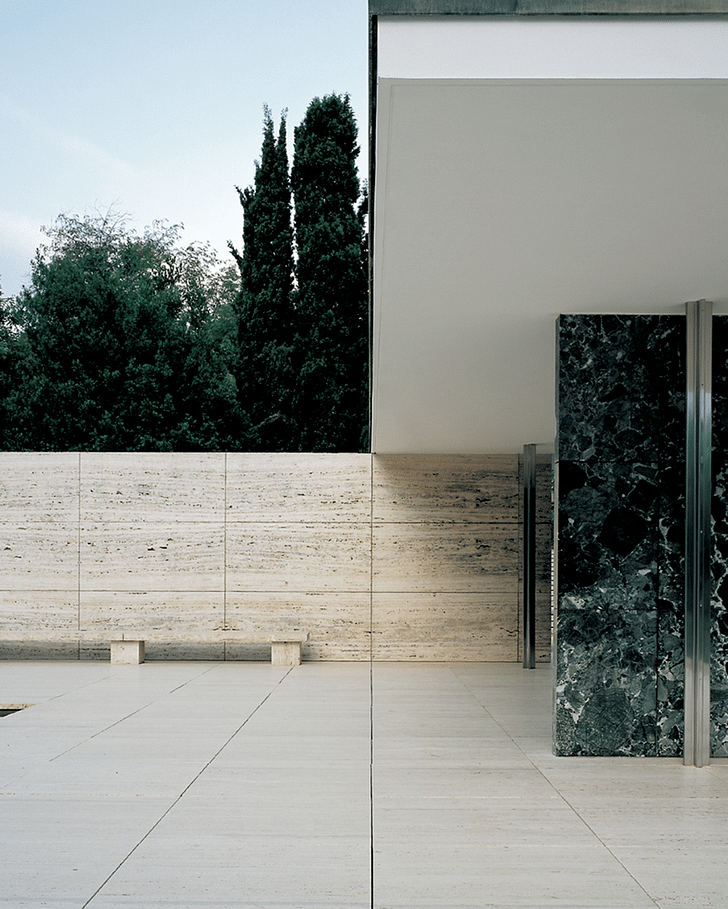
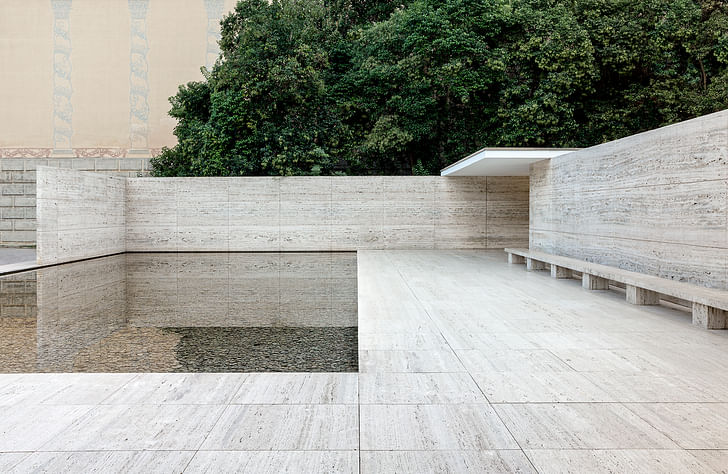
How does the building affect your job?
Positively. I work in a very nice place but it needs a lot of maintenance. You would think that there’s not much to do because the building looks simple and easy to maintain. However, every day, every shift, there are tasks to keep it perfect. Most of our visitors are architects or students of architecture, so our standards are high. Every little and single detail matters.
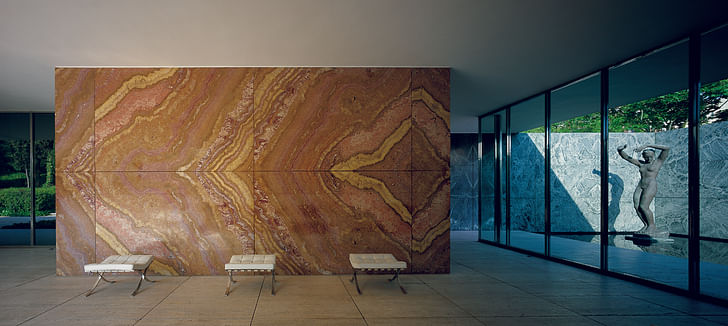
Is there anything you don’t like about the building?
Due to the nature of the building and the situation, sometimes it takes a long time to make improvements or solve certain problems. But in general, we always find another way to deal with these 'problems'.
If you left your job what would you miss most about the Pavilion?
The whole building. The location. Working outdoors. Talking to the visitors and students. Showing people the hidden details .Telling them stories about it. And I would miss my workmates too!
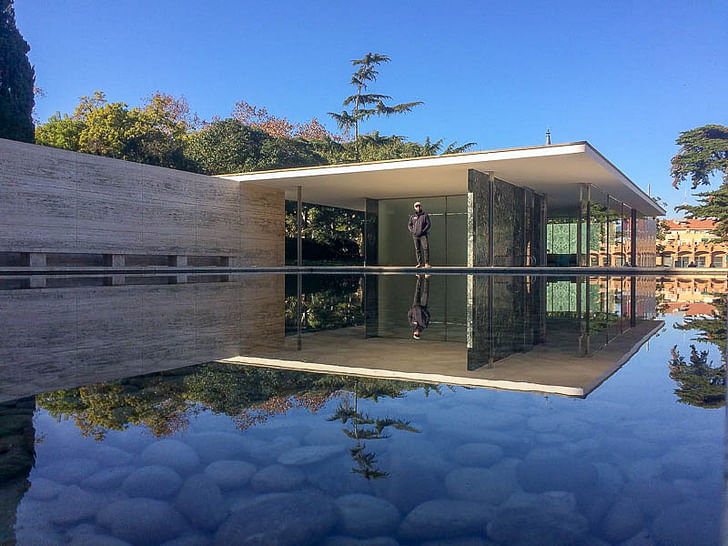
Ellen Hancock studied Fine Art and History of Art at The University of Leeds and Sculpture at Mimar Sinan Fine Arts University in Istanbul.Now based in London she has a keen interest in travel, literature, interactive art and social architecture.
2 Comments
You forgot to ask him/publish his views on the artistic intervention 'mies missing materiality'!
nice! :)
Block this user
Are you sure you want to block this user and hide all related comments throughout the site?
Archinect
This is your first comment on Archinect. Your comment will be visible once approved.